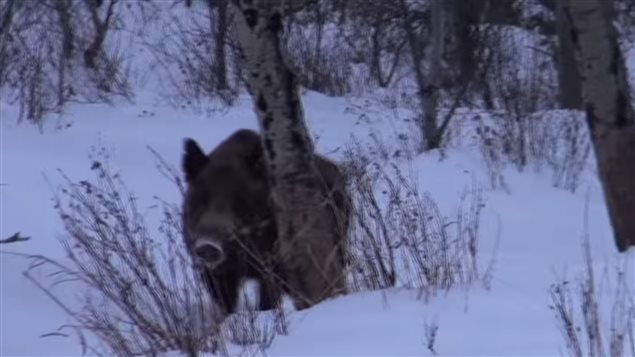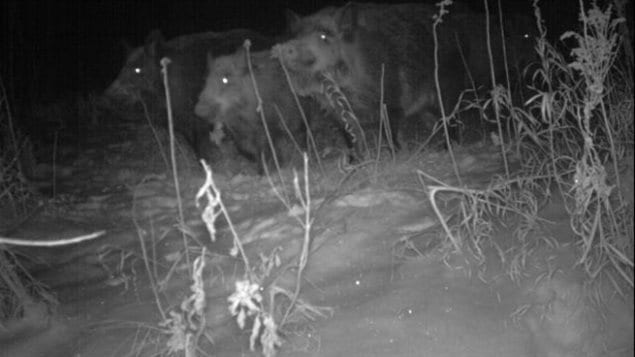Provincial authorities in Quebec are on war footing this fall to repel an invasion of a wily, omnivore animal that if left unchecked, could turn into an irreversible occupation and result in millions of dollars in damage to agriculture and forestry.
Provincial wildlife management officers are on the prowl to capture wild boars, which are being described as “one of the most harmful alien invasive species in the world,” the French-language newspaper La Presse reports this morning.
Wildlife management officers have captured seven beasts so far, mostly in the south-central part of Quebec, La Presse reports. There are an estimated 50 wild boars in Quebec.
The concern is that with almost no natural predators the feral pig and wild boar populations can grow very fast and expand their range.
According to Professor Ryan Brook of University of Saskatchewan, who studies these animals, Eurasian Wild Boar were brought to Canada in the late 1980s and through the 1990s to be raised in fenced-in corrals as livestock for meat production. A number of them, however, have escaped into the wild and have easily adapted to all regions in Canada.

Wild boars and feral pig populations have now been reported in almost every province of Canada from Quebec to British Columbia.
“While there are few areas of high pig density, the potential to increase and cause great harm to wildlife, ecosystems, livestock, and humans is very significant,” Brook wrote in a post for the Wild Hog Watch Facebook group.
The wild pigs and boars can produce litters of up to 13 piglets per litter, two or three times a year, according to a paper on the wild boar problem published by the U.S. Department of Agriculture.
These omnivore animals that live in groups of five to 10 pigs root through crops eating not only the plants but causing damage to the soil. They also go into wetlands and destroy nests and eat eggs of waterfowl and any ground nesting birds. A wild boar could degrade up to 4 hectares of land during its lifetime.

These nocturnal animals have a phenomenal hearing and sense of smell, and are notoriously hard to hunt. They can become deadly dangerous when they feel cornered or threatened.
Wild boars and feral pigs also carry disease and high parasite loads that can be easily transmitted to domestic livestock and pollute water.
The U.S. report estimates wild boars and feral pigs have already caused over $1.5 billion dollar in damages in the 38 U.S. states they have been found.
Eurasian wild boars were introduced in the U.S. over 100 years ago as a game species for wealthy hunters. In various cases a number escaped and later mated with escaped feral pigs that were brought in to southern states by the early European settlers in the 16th century. Since then the numbers have swelled across the U.S. to about five million animals.
The U.S. is spending tens of millions of dollars each year as part of a national coordinated strategy to eradicate feral pigs in northern states and manage them in southern states where the populations are fully established and impossible to eradicate, Brook wrote.
“Throughout all of the areas on Earth where feral pigs are established they cause significant problems and are hard to eradicate.”







For reasons beyond our control, and for an undetermined period of time, our comment section is now closed. However, our social networks remain open to your contributions.